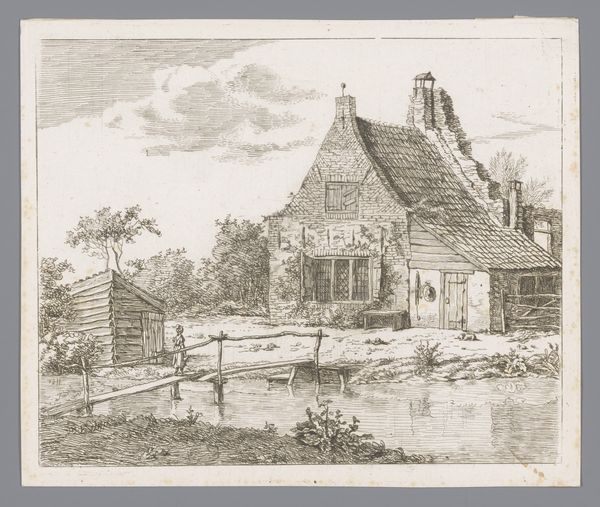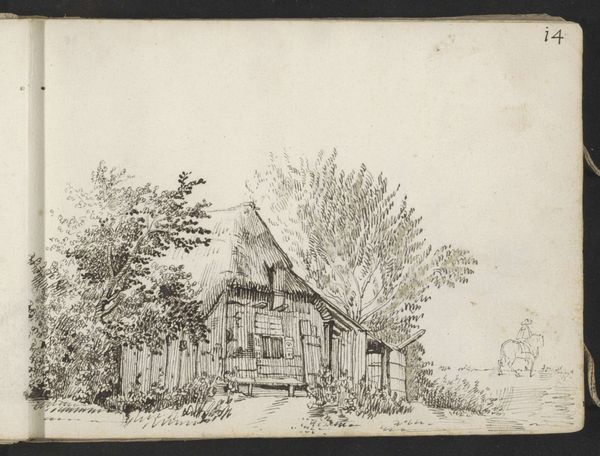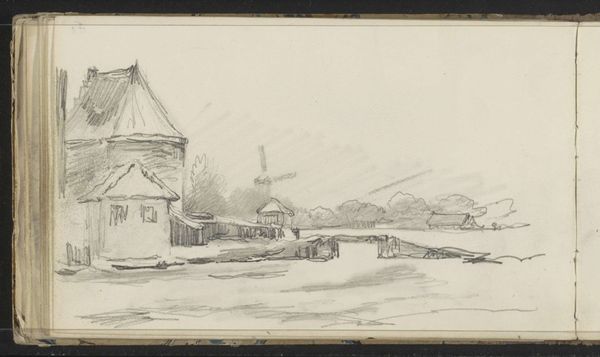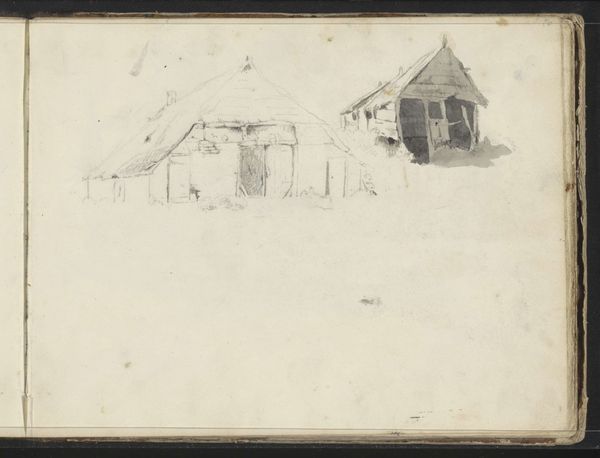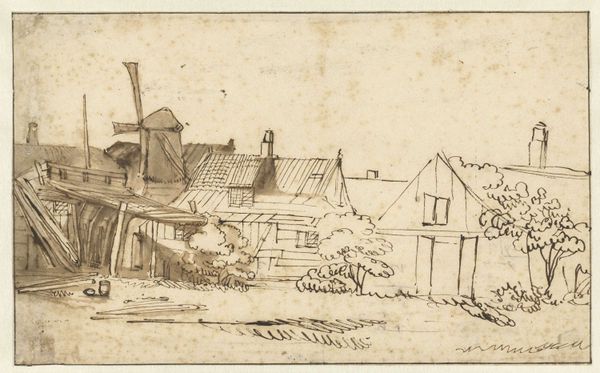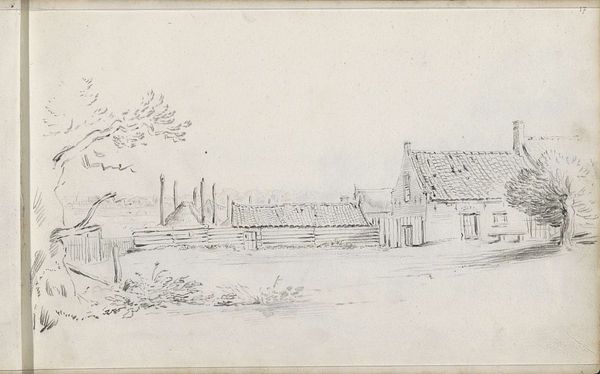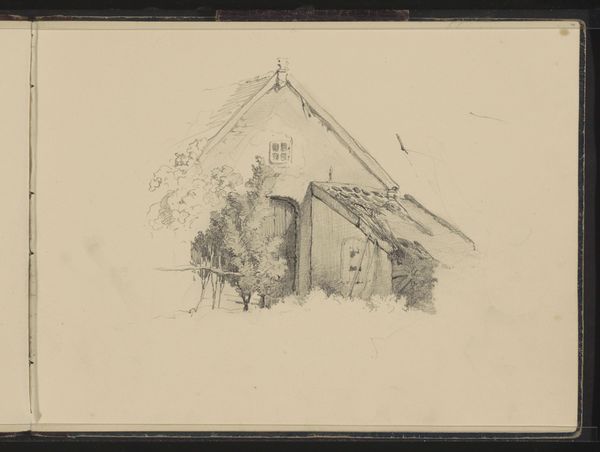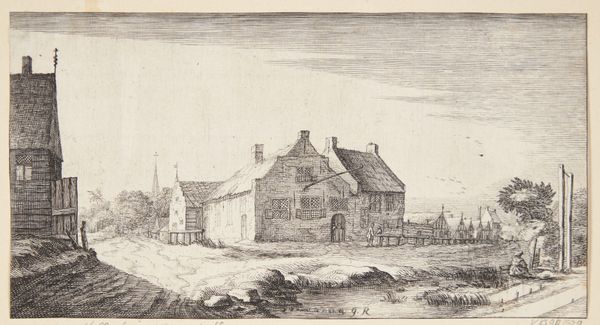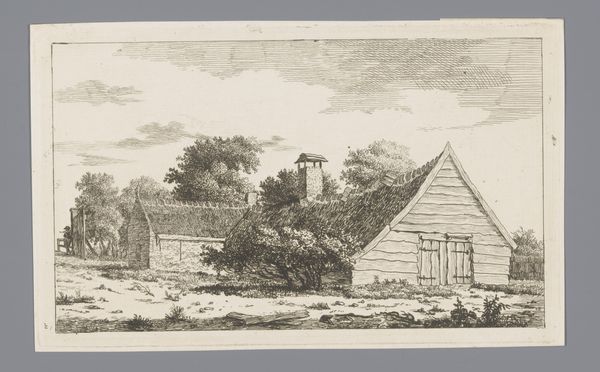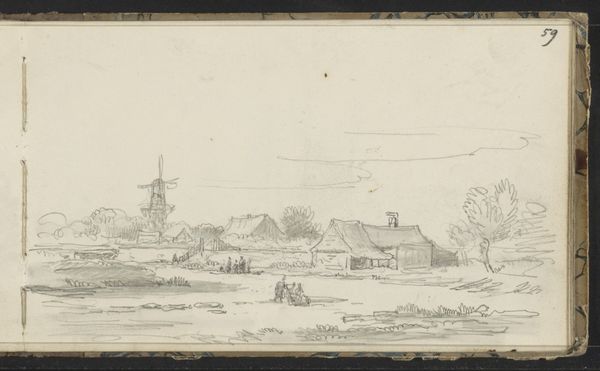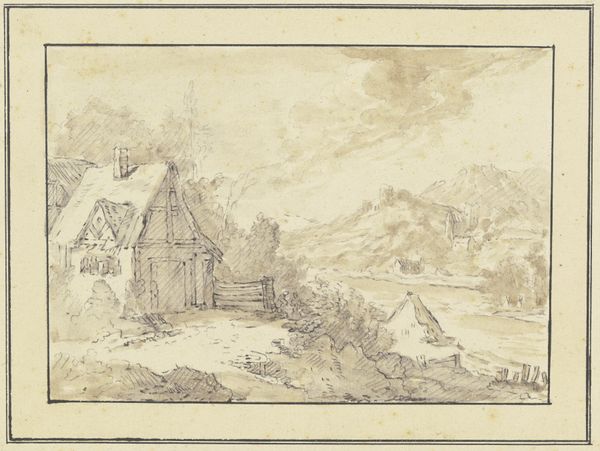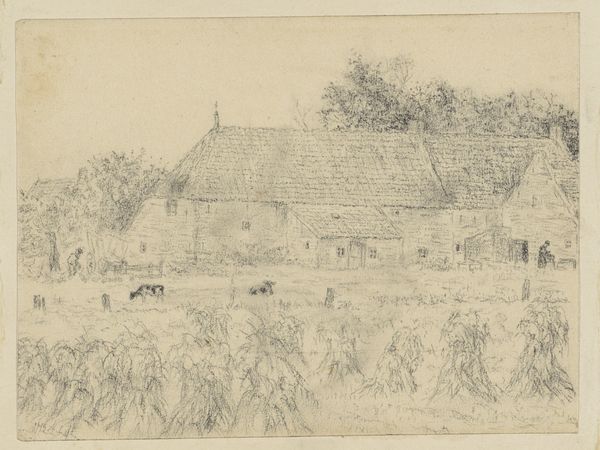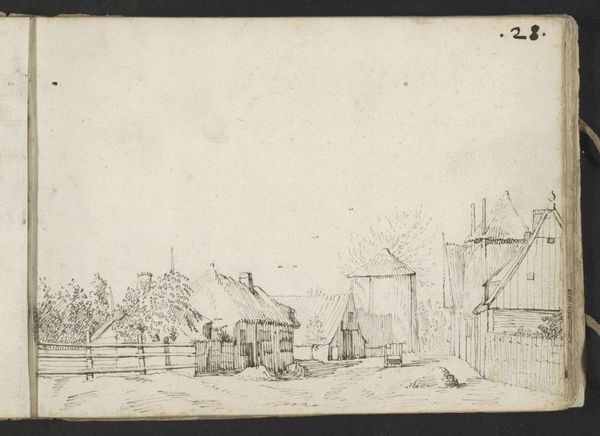
drawing, paper, ink
#
drawing
#
aged paper
#
light pencil work
#
dutch-golden-age
#
sketch book
#
landscape
#
paper
#
personal sketchbook
#
ink
#
sketchwork
#
pen-ink sketch
#
line
#
sketchbook drawing
#
cityscape
#
genre-painting
#
storyboard and sketchbook work
#
sketchbook art
#
design on paper
#
realism
Dimensions: height 185 mm, width 288 mm
Copyright: Rijks Museum: Open Domain
Editor: Here we have "Farmhouse on the Water" by Johan Johansz. Balen, an 18th-century drawing in ink. It’s such a tranquil scene, yet the lines feel somewhat precarious. It makes me wonder about the relationship between the people and their environment. What do you see in this piece? Curator: I see a confluence of survival and symbolic resonance. Water, life-giving and yet potentially destructive, surrounds this seemingly stable farmhouse. Consider the birds: one perched atop the chimney, another on the dovecote. They represent the soul’s flight, connection to the heavens. What does it mean for them to nest above a flooded landscape? Editor: So, you're suggesting the placement of the birds is more than just aesthetic? Curator: Absolutely. Nothing in these images is purely decorative. The water, constantly eroding, yet also reflecting the sky, signifies both impermanence and possibility. The dove cote itself, meant to attract doves for food and fertilizer, speaks to humanity’s attempts to control nature, even within a landscape defined by its precarity. Does the presence of swans soften that precarity, do you think, by perhaps reflecting ideas of serenity? Editor: Yes, I think so! It adds another layer. The swans do lend a sense of grace, softening what might otherwise feel like a scene of vulnerability. They transform vulnerability into peaceful resilience. Curator: Precisely. Think of Dutch art from this era; they transformed everyday life into grand allegory. This humble farm becomes a tableau of existence. Every symbol, even something as simple as the laundry in one corner, carries weight. They capture both individual fate and universal perseverance in equal measure. Editor: I had been seeing the building and its relationship with the water as the central subject of this image, and all I really saw were lines and shadows. Thank you for providing context, I think I now have a richer understanding of this drawing and what the artist might have wanted to convey. Curator: My pleasure. Sometimes all it takes is examining details and how each of them function as memory keepers.
Comments
No comments
Be the first to comment and join the conversation on the ultimate creative platform.
